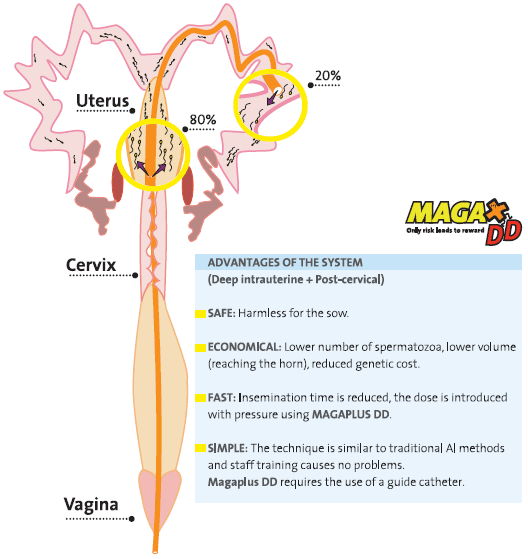 After two years of research, the Aragonese company Magapor launched the first mixed insemination system for swine, a mixed catheter with double semen deposition. In particular, as Carlota Goméz Rincón, R+D+I manager of the company explained, this system combines postcervical and deep intrauterine insemination techniques “easily and in a single insemination.”
After two years of research, the Aragonese company Magapor launched the first mixed insemination system for swine, a mixed catheter with double semen deposition. In particular, as Carlota Goméz Rincón, R+D+I manager of the company explained, this system combines postcervical and deep intrauterine insemination techniques “easily and in a single insemination.”The main advantages of this system lie in its safety, as it does not harm the sow; economy, as lower number of spermatozoa per dose is required; quickness, as semen is introduced by pressure; and simplicity, as it is similar to the traditional method.
Double deposition of seminal liquid guarantees semen distribution in both horns of the animal’s reproductive organs, which prevents the descent in prolificity observed with traditional systems. In fact, it does increase an average of 0.6 piglets per sow’s delivery each year, which means 1500 additional piglets per year. The probe used is similar to that of postcervical insemination but longer and with three exit orifices. Thus, 80 % of the dose is deposited in the postcervical area through two opposed orifices of a specific diameter; and the 20% left is placed in the utero-tubal junction or inside one of the uterine horns through the distal orifice.
So as to check the efficiency of the method, an “exhaustive” process of design, research and trial that lasted two years and allowed to determine if semen was distributed in the two horns was carried out. Sows were inseminated with methylene blue and afterwards slaughtered. After extraction of the genital organs, insemination results and optimum concentration and volume needed for the system were verified.




